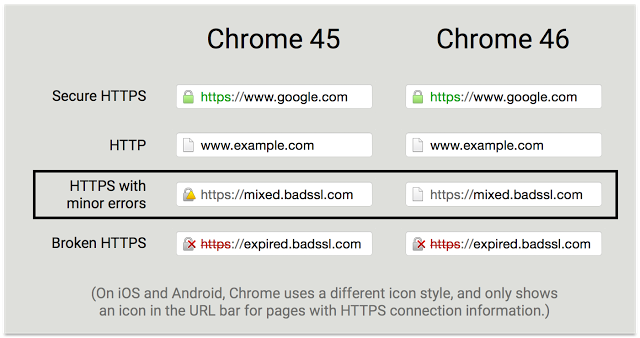
Here is a chart showing the new change.
The Google blog notes that this change will impact those sites that are serving HTTPS pages, but have non-HTTPS images on the page. It will also affect sites that are pulling some kind of other element, such as a third-party script, onto the page that is not also HTTPS.
It is a pretty minor change, but it is likely due to the confusion surrounding the status image showing as a lock, making people think the page is essentially secure when it actually isn’t completely secure. Google feels it is best not to have two secure status icons, and this reduces the shown states to three. In the future, Google plans to reduce this to just two states – secure and non-secure.
We do know that Google plans to flag non-secure flights in the future, in the form of an X through the lock icon, but while it is testing in Google Chrome Canary, it hasn’t been made default in the regular version of Chrome.
It also raises the question whether these pages will still receive the HTTPS ranking boost if they are serving mixed content.
Jennifer Slegg
Latest posts by Jennifer Slegg (see all)
- 2022 Update for Google Quality Rater Guidelines – Big YMYL Updates - August 1, 2022
- Google Quality Rater Guidelines: The Low Quality 2021 Update - October 19, 2021
- Rethinking Affiliate Sites With Google’s Product Review Update - April 23, 2021
- New Google Quality Rater Guidelines, Update Adds Emphasis on Needs Met - October 16, 2020
- Google Updates Experiment Statistics for Quality Raters - October 6, 2020




